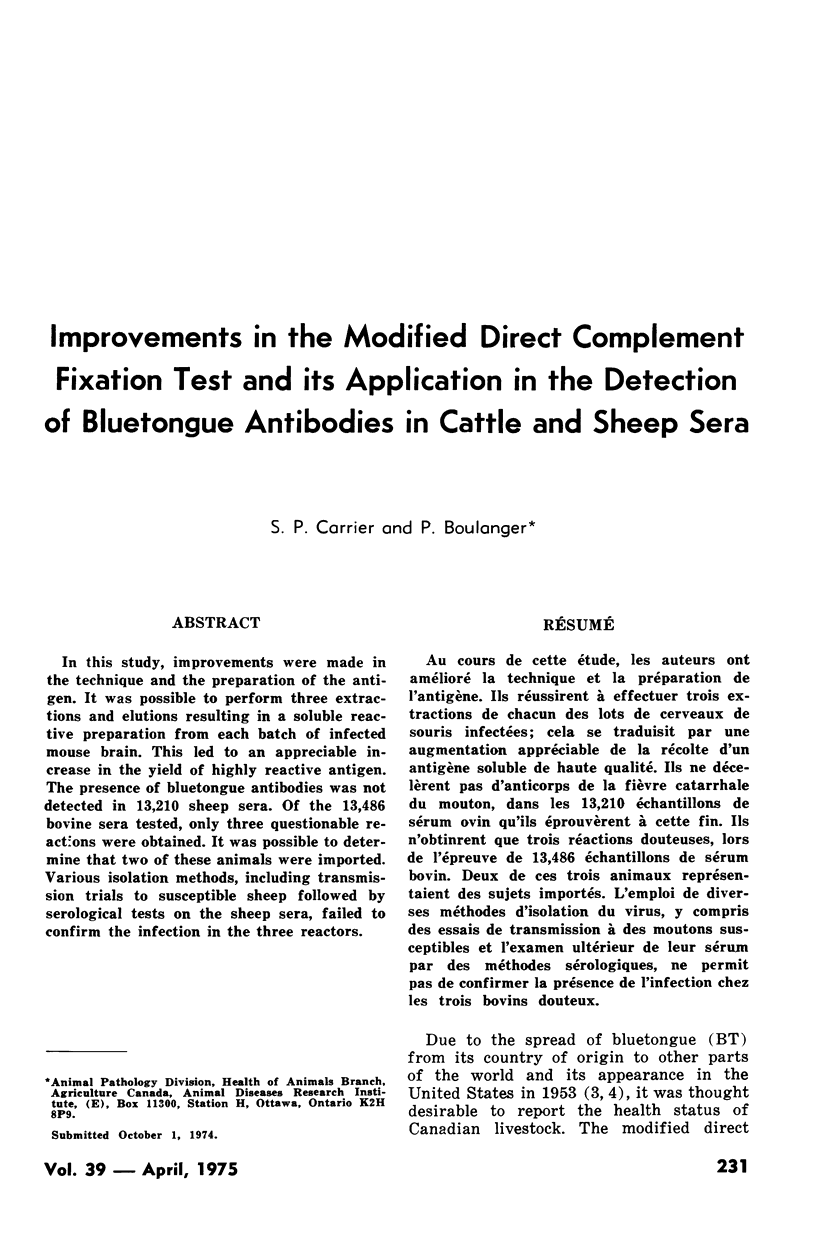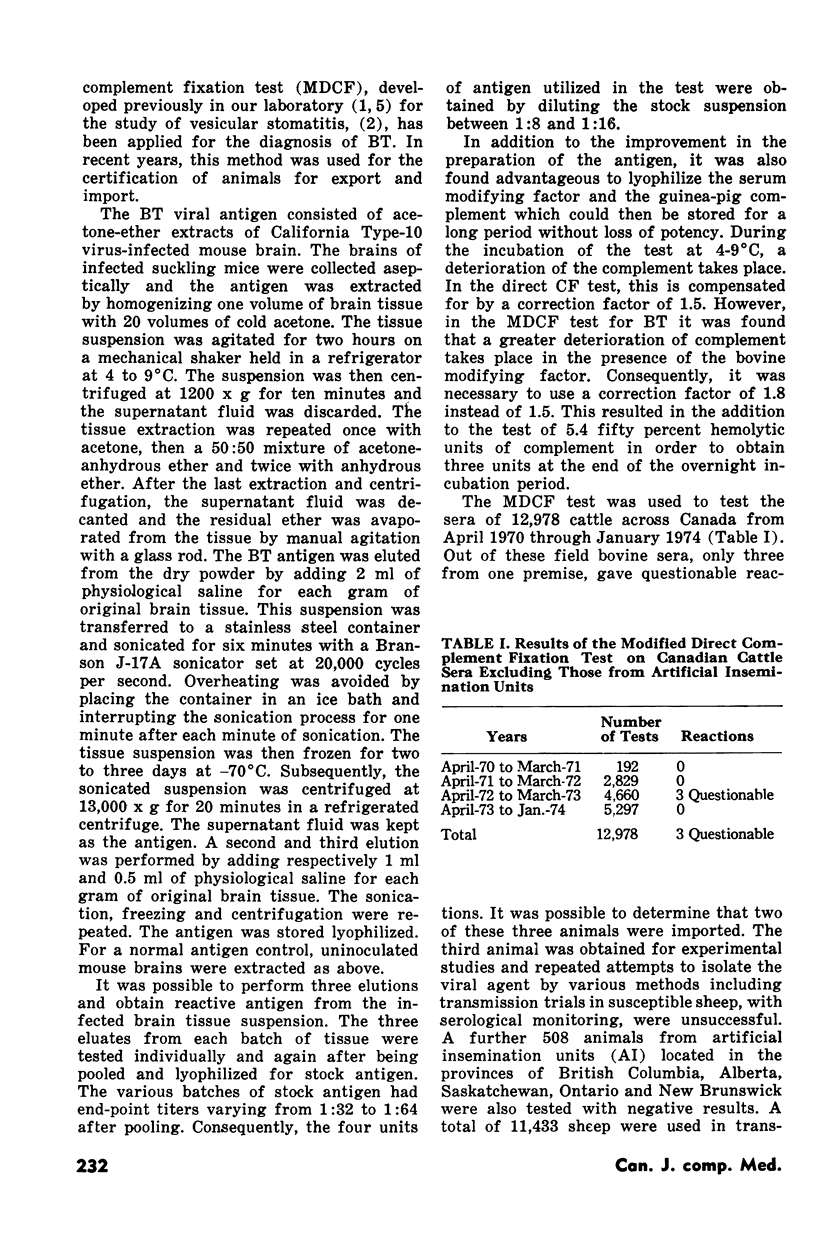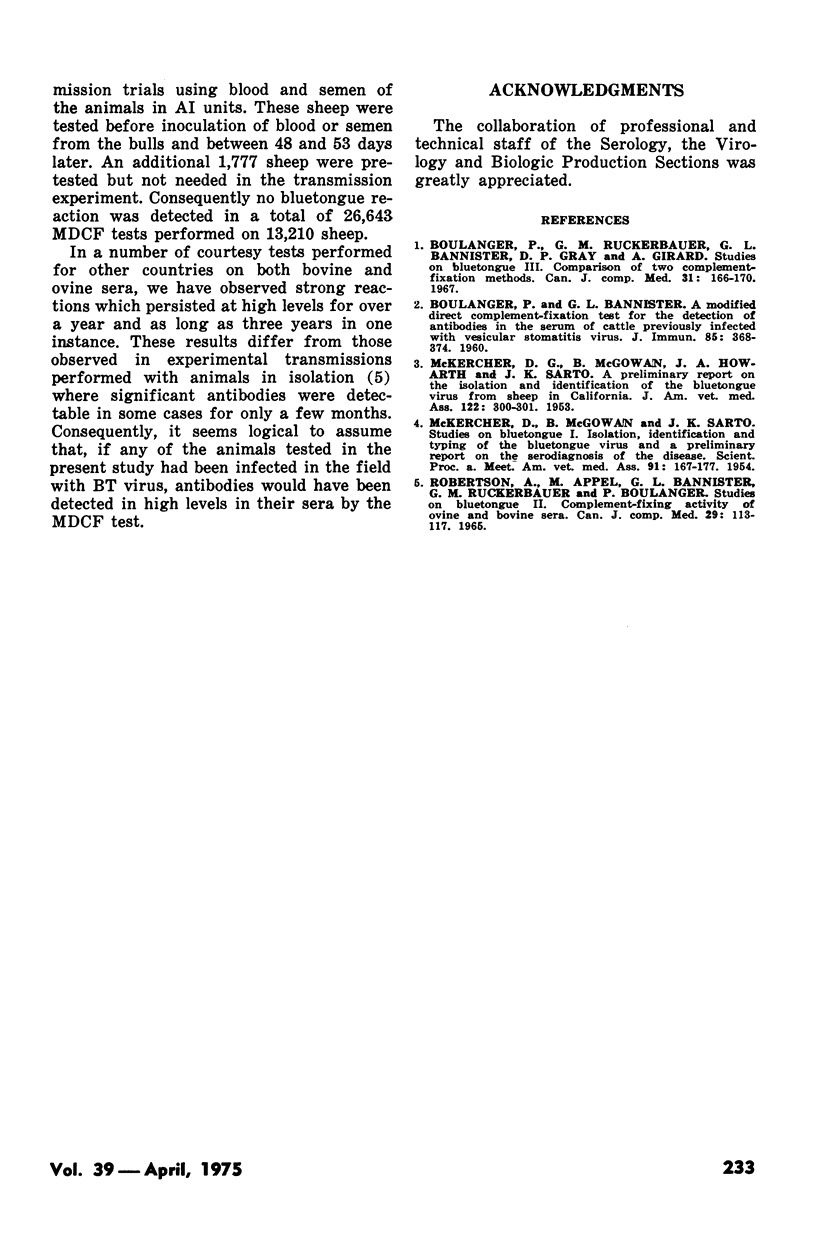Abstract
In this study, improvements were made in the technique and the preparation of the antigen. It was possible to perform three extractions and elutions resulting in a soluble reactive preparation from each batch of infected mouse brain. This led to an appreciable increase in the yield of highly reactive antigen. The presence of bluetongue antibodies was not detected in 13,210 sheep sera. Of the 13,486 bovine sera tested, only three questionable reactions were obtained. It was possible to determine that two of these animals were imported. Various isolation methods, including transmission trials to susceptible sheep followed by serological tests on the sheep sera, failed to confirm the infection in the three reactors.
Full text
PDF


Selected References
These references are in PubMed. This may not be the complete list of references from this article.
- Boulanger P., Ruckerbauer G. M., Bannister G. L., Gray D. P., Girard A. Studies on bluetongue. 3. Comparison of two complement-fixation methods. Can J Comp Med Vet Sci. 1967 Jul;31(7):166–170. [PMC free article] [PubMed] [Google Scholar]
- MCKERCHER D. G., MCGOWAN B., HOWARTH J. A., SAITO J. K. A preliminary report on the isolation and identification of the bluetongue virus from sheep in California. J Am Vet Med Assoc. 1953 Apr;122(913):300–301. [PubMed] [Google Scholar]
- ROBERTSON A., APPEL M., BANNISTER G. L., RUCKERBAUER G. M., BOULANGER P. STUDIES ON BLUETONGUE II. COMPLEMENT-FIXING ACTIVITY OF OVINE AND BOVINE SERA. Can J Comp Med Vet Sci. 1965 May;29:113–117. [PMC free article] [PubMed] [Google Scholar]


